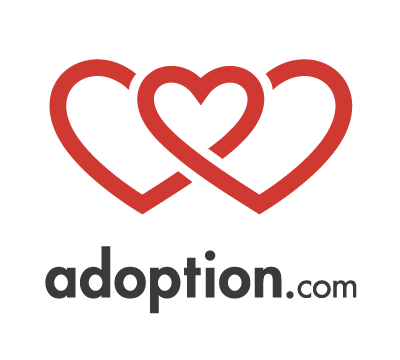How Has The Adoption of Infants Changed?
In the last two centuries, the adoption of infants has undergone many changes, reflecting societal shifts, legal changes, and evolving perspectives on family structures. Take a look at the historical trajectory of infant adoption, key milestones, and the impact of changing norms on the adoption process.
The Early 19th Century: Informal and Familial Adoption Practices
In the early 1800s, formalized adoption processes were virtually nonexistent. Families often relied on informal arrangements within their communities to care for orphaned or abandoned children. In this era, adoption was predominantly familial, with extended family members or close neighbors taking on caregiving roles. Records of these arrangements were minimal, and legal frameworks were practically nonexistent.
What did life look like for an orphan in the early 1800s?
Informal Arrangements: Orphans in the early 1800s often relied on informal agreements within their extended family or community. Support came from relatives, neighbors, or community members who took in orphaned children.
Workhouses and Institutions: Orphans were sometimes placed in workhouses or almshouses, run by local governments or charities. While providing basic care, these institutions varied in quality, and the focus was not always on creating family-like environments.
Apprenticeships: Some orphans were apprenticed to learn trades or skills. This practice served both to ensure the child’s well-being and education and to contribute to the labor force.
Lack of Legal Formalities: Legal adoption, as a formalized and regulated process, did not exist in the early 1800s. The transfer of guardianship or care was often based on informal agreements, with fewer legal safeguards for the child’s rights.
Limited Rights for Children: Children, including orphans, had limited legal rights and protections during this period. Their welfare and future were often determined by prevailing social norms and the goodwill of the community.
The Rise of Orphanages: Late 19th to Early 20th Century
As urbanization and industrialization accelerated in the late 19th century, orphanages emerged as a response to the increasing number of vulnerable children. Orphanages provided a structured environment for children without parental care. However, these institutions faced challenges such as overcrowding and limited resources, prompting a growing need for alternative solutions.
What were the pros and cons of orphanages in America?
Pros
- Charitable Contributions: Communities and individuals often responded to the creation of orphanages by making charitable contributions. Donations of money, goods, and volunteer time helped support the operations and care of orphanages.
- Community Involvement: Orphanages became focal points for community involvement. People organized events, fundraisers, and activities to support the orphanage and its residents. This sense of community engagement helped create a supportive environment for the children.
- Volunteerism: Many individuals volunteered their time and skills to work directly with the children in orphanages. This included teaching, mentoring, and providing emotional support to the orphans, contributing to their overall well-being.
- Advocacy and Oversight: As orphanages became more prevalent, there was a growing awareness of the need for oversight and advocacy. Organizations and individuals worked to establish regulations and standards to ensure the well-being and proper treatment of the children in these institutions.
- Religious and Civic Groups: Religious and civic organizations played a significant role in responding to orphanages. Some orphanages were affiliated with religious institutions, and these groups often took on the responsibility of funding, managing, and staffing the orphanages.
- Government Support: Over time, there were instances of government support for orphanages. Local, state, or federal funding helped sustain the operations of some orphanages, recognizing the social responsibility to care for orphaned or abandoned children.
- Education Initiatives: Orphanages often prioritized education for the children under their care. Society responded by supporting educational initiatives within orphanages, providing opportunities for academic and vocational learning.
- Foster Care Programs: As society’s understanding of child welfare evolved, there was a shift towards developing foster care programs as an alternative to institutional care. This response aimed to provide children with a more family-like environment.
Cons
- Institutional Environment: Orphanages often provided a more institutional and regimented environment, which could be less conducive to individualized care and emotional well-being for children.
- Limited Personalized Attention: With a large number of children in one facility, it was challenging for caregivers to provide personalized attention to each child. This lack of individualized care could impact the emotional development of the children.
- Stigmatization: Children residing in orphanages sometimes faced stigmatization from society. The label of being an “orphan” could carry negative connotations and affect how these children were perceived and treated by others.
- Potential for Abuse: The institutional nature of orphanages sometimes created an environment where the risk of abuse existed. Cases of physical, emotional, or neglectful mistreatment could occur, particularly in facilities with inadequate oversight.
- Separation from Siblings: Siblings in orphanages could be separated from each other disrupting familial bonds and adding to the emotional challenges faced by children. This separation often occurred due to age-grouping or specific policies within the orphanage.
- Limited Life Skills: Some critics argued that children raised in orphanages might have limited exposure to essential life skills, such as managing a household, budgeting, and other practical aspects of daily life that are typically learned in traditional family settings.
- Dependency on Institutional Support: Children growing up in orphanages might develop a dependency on institutional support, potentially affecting their ability to transition successfully into independent adulthood.
- Lack of Individualized Planning for the Future: Orphanages might not have prioritized individualized planning for each child’s future. This could include educational and vocational guidance, limiting the children’s opportunities to develop skills for self-sufficiency.
How did children of different races experience life in orphanages?
During the late 1800s and early 1900s, children of different races experienced American orphanages in ways influenced by existing racial attitudes and discriminatory practices. Here’s a brief overview:
- Segregation: Orphanages were often segregated based on race. African American, Native American, and other minority children were placed in separate facilities, reflecting the racial segregation prevalent in society at the time.
- Limited Opportunities: Children from minority racial and ethnic backgrounds faced limited opportunities compared to their white counterparts. Access to education, vocational training, and other resources in orphanages could be unequal, perpetuating systemic disparities.
- Cultural Alienation: Children of different races often experienced cultural alienation in predominantly white orphanages. The lack of understanding and appreciation for diverse cultural backgrounds could contribute to feelings of isolation and identity challenges.
- Discrimination in Adoption: In cases where adoption was a possibility, minority children faced discrimination, with potential adoptive parents showing preferences for children of their own racial or ethnic background. This discriminatory practice further limited the chances of finding permanent, loving homes for these children.
- Harsher Conditions: Orphanages for minority children sometimes received fewer resources, and the conditions could be harsher compared to those for white children. This disparity in living conditions contributed to unequal treatment and reinforced systemic racism.
- Impact on Identity: Growing up in racially segregated orphanages could have a lasting impact on the identity formation of minority children. The lack of representation and cultural understanding might lead to challenges in developing a strong sense of self and belonging.
- Prejudice and Bias: Orphanage staff and caregivers might have held prejudiced views that influenced the treatment of children from different racial backgrounds. This could manifest in disparities in discipline, opportunities, and overall care.
- Limited Contact with Biological Heritage: Children in orphanages, especially those from minority backgrounds, often had limited contact with their biological heritage. This lack of connection to their cultural roots could contribute to a sense of loss and identity struggles.
It’s essential to acknowledge the historical context and recognize that these challenges were part of broad, systemic issues related to racial inequality. The evolution of child welfare practices and societal shifts has led to efforts to address these disparities and promote equitable treatment for all children, regardless of their racial or ethnic backgrounds.
The Mid-20th Century: Closed Adoption Practices
The mid-20th century witnessed the rise of closed adoption practices, characterized by secrecy and confidentiality. The social stigma surrounding unmarried pregnancies led to a culture of secrecy, where birth parents’ identities were often concealed and adoptive families were provided limited information. Closed adoptions aimed to protect the privacy of all parties involved but contributed to a lack of transparency and understanding about family histories.
The evolution of closed adoption in America
In the early 1900s, closed adoptions focused on secrecy, with limited information exchange and sealed records. By the mid-20th Century, this secrecy persisted, accompanied by increased stigmas around out-of-wedlock pregnancies. Shifting attitudes emerged in the late 20th Century, advocating for adoptees’ rights to access birth records and leading to reforms in the 1980s and defaulting to more open adoption practices in some areas.
In the 21st Century, there’s a greater acknowledgment of open adoption benefits with increased advocacy for transparency. Technology, like DNA testing and online platforms, challenges traditional secrecy. Legal changes prompt ongoing debates about balancing privacy concerns with adoptees’ rights to information reflecting the changing landscape of closed adoption.
The Adoption Boom: Late 20th Century
The latter half of the 20th century saw a significant increase in adoption rates, driven by societal shifts, decreased stigma surrounding single parenthood, and advancements in reproductive technologies. International adoption gained prominence, offering families the opportunity to adopt children from different cultures and countries. Domestic adoption also saw changes, with a gradual shift towards more openness and inclusivity.
1960s-1970s: More people started adopting children from Asia, especially countries like South Korea and Vietnam.
1980s-1990s: Adoption from Eastern Europe and Latin America increased due to changes in politics and society.
2000s-2010s: International adoption reached its highest point with China, Russia, and Ethiopia opening to those who wanted to adopt internationally. However, fewer children were adopted over time due to policy changes and a focus on domestic adoption in some places.
2020s: International adoption numbers continued to decrease, influenced by stricter rules, ethical concerns, and a preference for finding solutions for orphaned and abandoned children within their own countries.
Throughout these times, changes in world events, adoption rules, and a better understanding of ethical issues have influenced how many children are adopted internationally.
The Internet Age: Adoption in the 21st Century
The rise of the internet has revolutionized the adoption process providing a platform for information-sharing, networking, and connecting prospective adoptive parents with birth parents. Adoption agencies and online platforms now facilitate open communication, breaking down barriers and fostering a more collaborative approach to the adoption journey.
Current Practices: Open Adoption, Transparency, and Education
Open Adoption:
Contemporary adoption practices emphasize openness, allowing for varying degrees of contact between birth and adoptive families. Open adoption promotes transparency, communication, and the sharing of information, fostering healthier relationships and a more comprehensive understanding of family dynamics.
Transparency and Education:
Modern adoptive parents are encouraged to engage in comprehensive education and training programs. These programs cover topics such as cultural sensitivity, understanding trauma, and navigating open adoption relationships. Increased transparency and education contribute to the overall well-being of all individuals involved in the adoption triad.
Support Networks:
The adoption community has witnessed the growth of robust support networks. Online forums, local groups, and specialized counseling services provide adoptive parents, birth parents, and adoptees with valuable resources, guidance, and emotional support throughout their adoption journeys.
The evolution of the adoption of infants over the past 200 years reflects a dynamic interplay of societal, cultural, and legal factors. From informal familial arrangements to the rise of open adoption practices, the journey has been transformative. As we navigate the future, it is crucial to continue fostering transparency, education, and support within the adoption community ensuring that the process remains a positive and inclusive experience for all parties involved.









